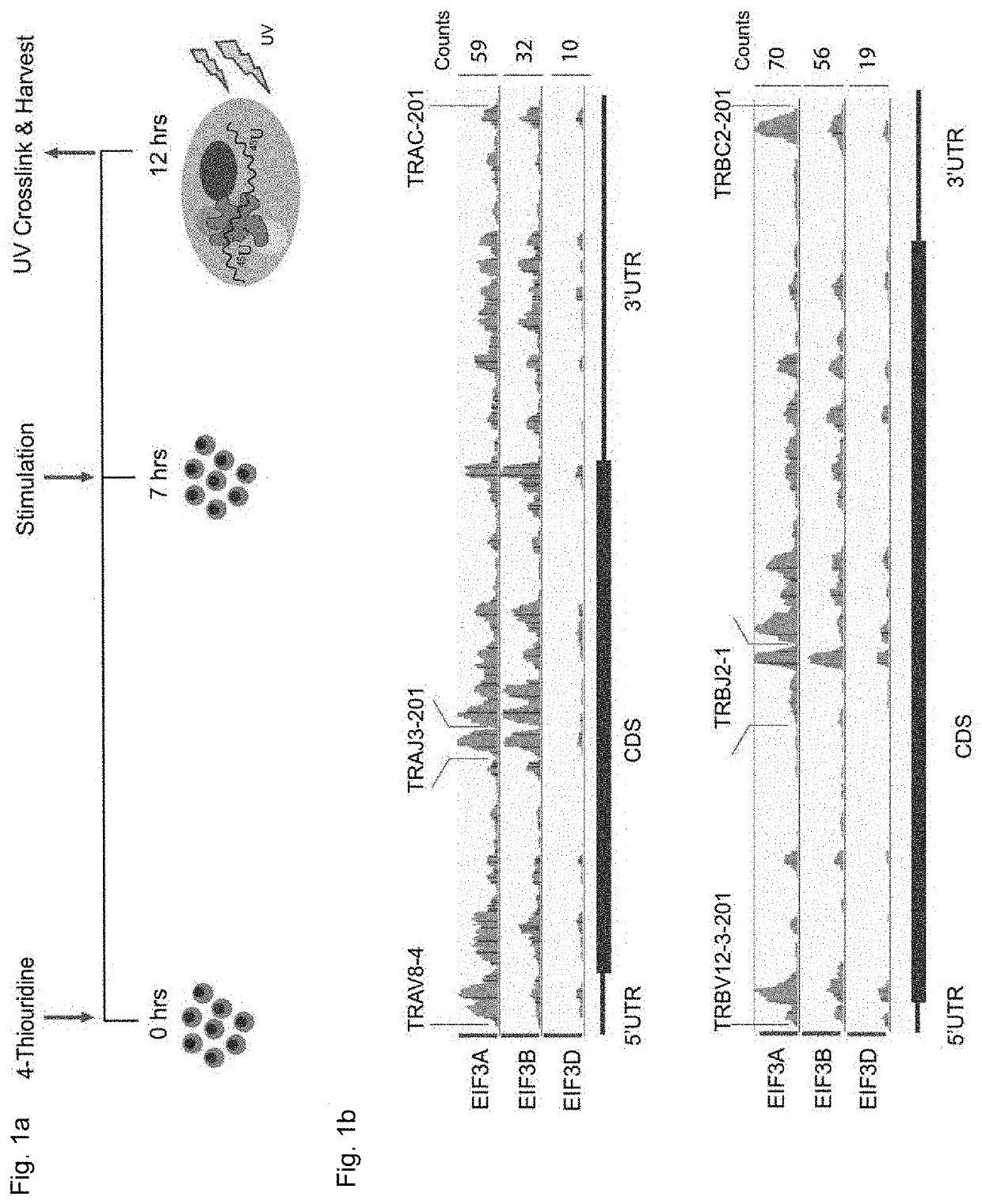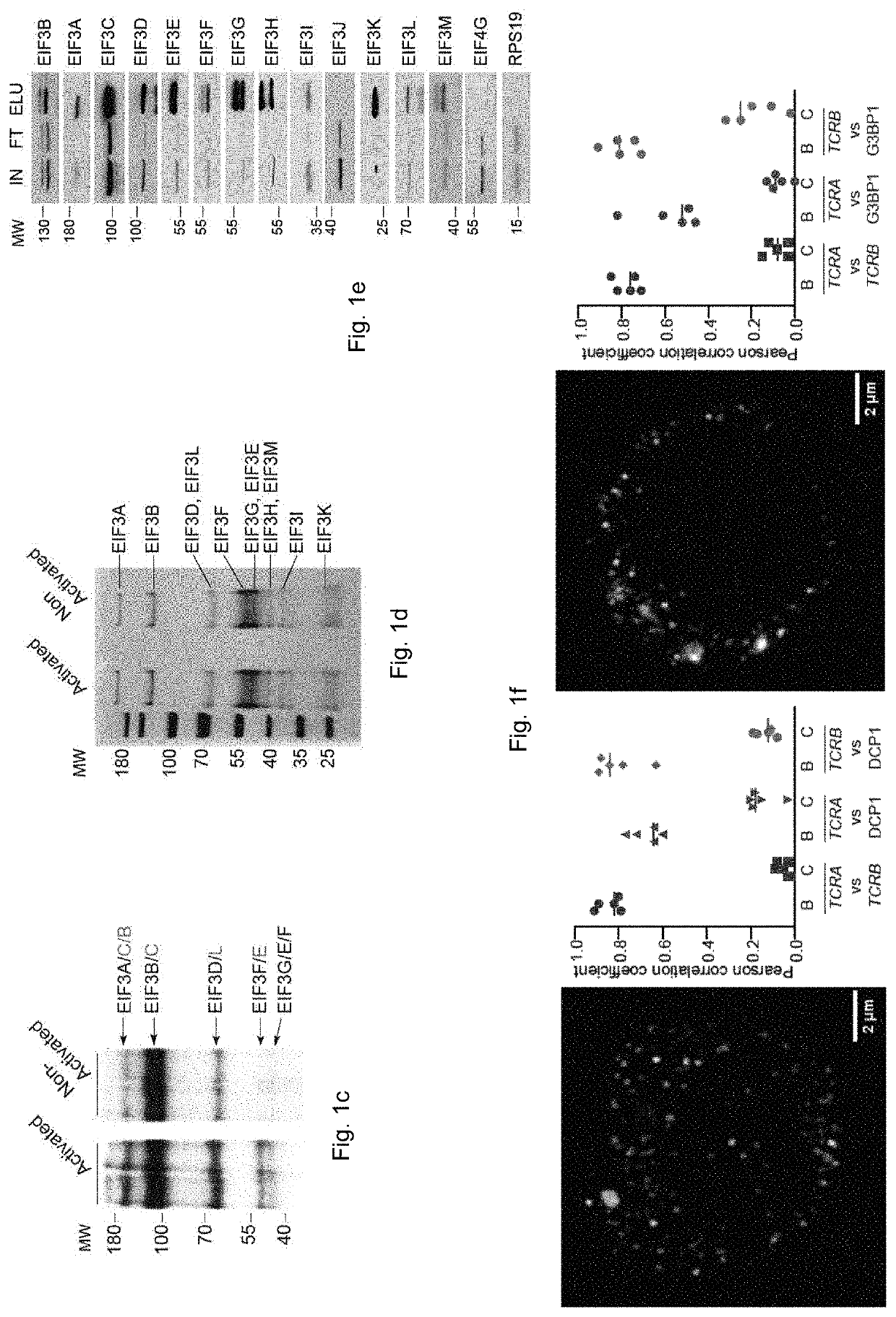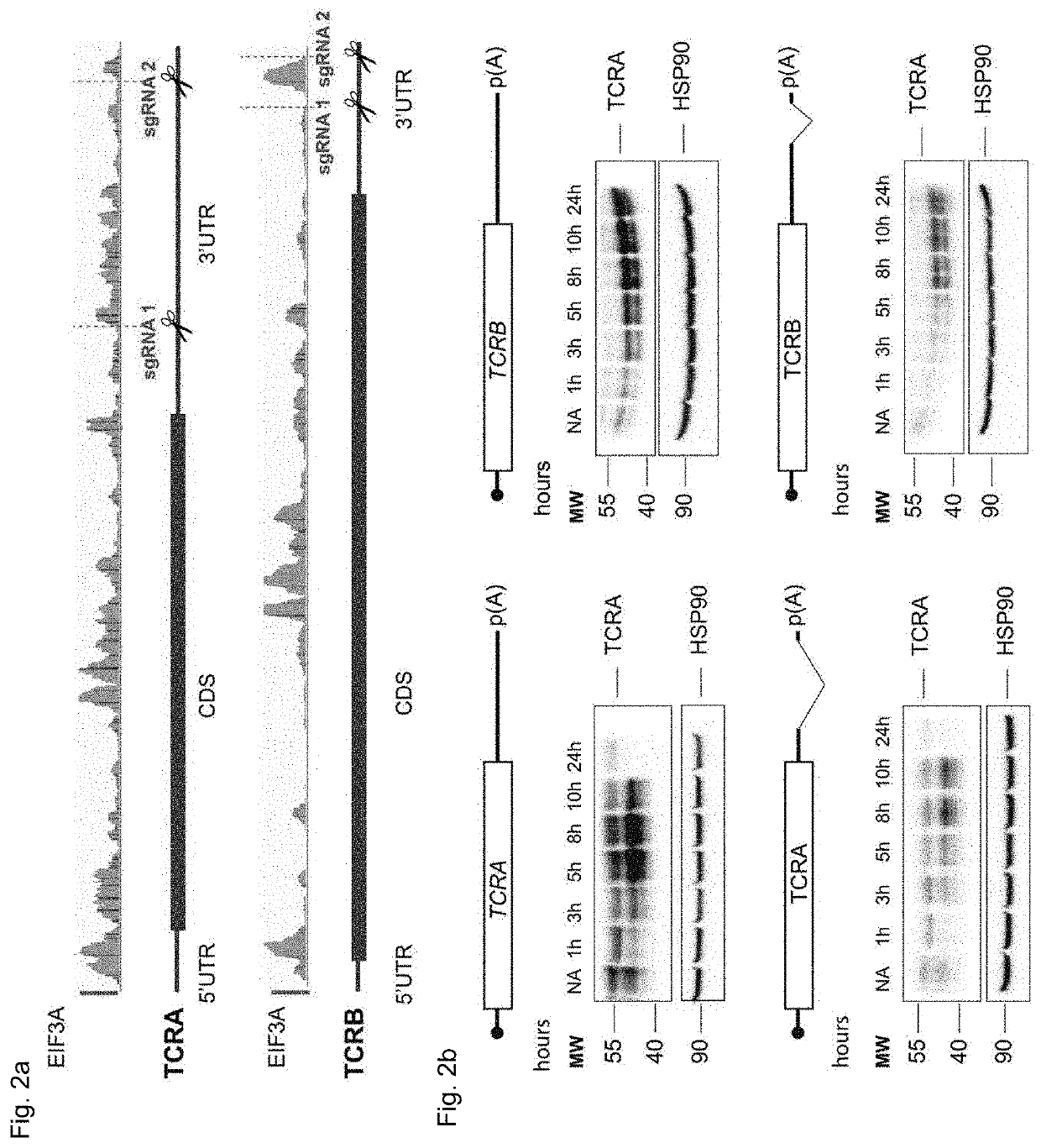Modulation of Engineered Immune Cell Receptor Translation Using Noncoding Sequence Elements
a technology of engineered immune cells and sequence elements, applied in the direction of viruses/bacteriophages, active genetic ingredients, genetic material ingredients, etc., can solve the problems of toxic side effects of patients treated with act, death of patients,
- Summary
- Abstract
- Description
- Claims
- Application Information
AI Technical Summary
Benefits of technology
Problems solved by technology
Method used
Image
Examples
examples
Modulation of Engineered Immune Cell Receptor Translation Using Noncoding Sequence Elements
[0187]To identify candidate mRNAs that directly interact with eIF3 during early events of T cell activation, we used Jurkat cells stimulated for 5 hours with ionomycin and phorbol 12-myristate 13-acetate (I+PMA) (FIG. 1a). Jurkat cells were used as a model T cell as PAR-CLIP experiments require a large amount of cells supplemented with 4-thiouridine at a non toxic concentration (Huppertz, 2014) and Jurkat cells have a defined clonal endogenous T cell receptor and transcriptome, such that the donor to donor variability exhibited in primary T cells can be avoided. To identify eIF3 binding sites on target RNA on a transcriptome-scale we used the PAR-CLIP (Photoactivatable-Ribonucleoside-Enhanced Crosslinking and Immunoprecipitation) method. With PAR-CLIP one can identify RNA that directly interacts with an RNA-binding protein of interest. Prior to crosslinking to the RNA-binding protein (RBP), al...
PUM
| Property | Measurement | Unit |
|---|---|---|
| Responsivity | aaaaa | aaaaa |
Abstract
Description
Claims
Application Information
 Login to View More
Login to View More - R&D Engineer
- R&D Manager
- IP Professional
- Industry Leading Data Capabilities
- Powerful AI technology
- Patent DNA Extraction
Browse by: Latest US Patents, China's latest patents, Technical Efficacy Thesaurus, Application Domain, Technology Topic, Popular Technical Reports.
© 2024 PatSnap. All rights reserved.Legal|Privacy policy|Modern Slavery Act Transparency Statement|Sitemap|About US| Contact US: help@patsnap.com










